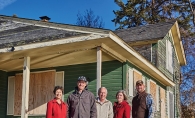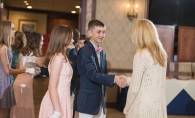“Safe-space” can be a daunting term especially when placed within the framework of academia, particularly higher education. This begs the question: How can we even begin to address what seems to be such an ambiguous necessity when we can barely get past the definition?
It is a general consensus that one way safe-space may be defined is as a literal place where individuals, namely students, can feel comfortable to exist and voice their opinions.
The truth of the matter is that safe-spaces come in many forms, some of which transcend just physical spaces. While student organizations and special interest clubs do help by providing access and inclusion on college campuses, this response to the matter only scratches the surface of what is truly needed by students.
As the assistant director of the Department of Multicultural Life at Macalester College, Demetrius Colvin is well aware of the challenges that colleges and universities face when trying to tackle such a dynamic issue.
“On an administrative level, we have to be willing to ask ourselves the hard questions,” Colvin says, “like, what are the things that I’ve learned? What am I doing, who is it affecting?” He explains that these are the type of questions that can be scary, because they force us to be honest with ourselves and precede the obligation to take action that we aren’t always ready or willing to take.
As an environmental studies major and a student of color, Alia Baitie recognizes the need for changes in her classroom structure. Baitie, a sophomore at Macalester College, says, “More conversations need to be had, specifically between students and professors.” Navigating a field that has few students of color, Baitie has realized it is difficult for many students to approach their teachers about things such as cultural insensitivities that are embedded in course content.
According to Dr. Artika Tyner, university diversity and inclusion officer at the University of St. Thomas, “The reality is that we have a more globalized economy; that means we are more interconnected,” Tyner says. On a communal scale we must be aware of our agency in our social circles because the issue of safe-spaces is bigger than university.
Emaan Soliman, a sophomore at St. Catherine University, has had quite the journey to Minnesota from Egypt, and has found great value in the community support on her campus. She has seen how attitudes can foster a safe-space even more than a formal group might. “I have friends who are Muslim who visit St. Kate’s that are not even students, but they say they feel comfortable here, and it’s because of how they are treated,” Soliman says.
The construction of safe-spaces does not begin in our schools but in our own consciousness; it is in attitudes, language and responses.
Deconstructing perceptions first will be the catalyst that provokes new conversations. “When it comes to actually having safe-spaces we must remember it’s not a destination but an ongoing and continuous journey to building our community…that’s the beauty of it,” says Tyner.
-Tiffany Trawick is an English major at the University of Minnesota. She has a passion for writing and is also an award-winning entrepreneur after participating in the University of Minnesota’s ACARA challenge 2015.









